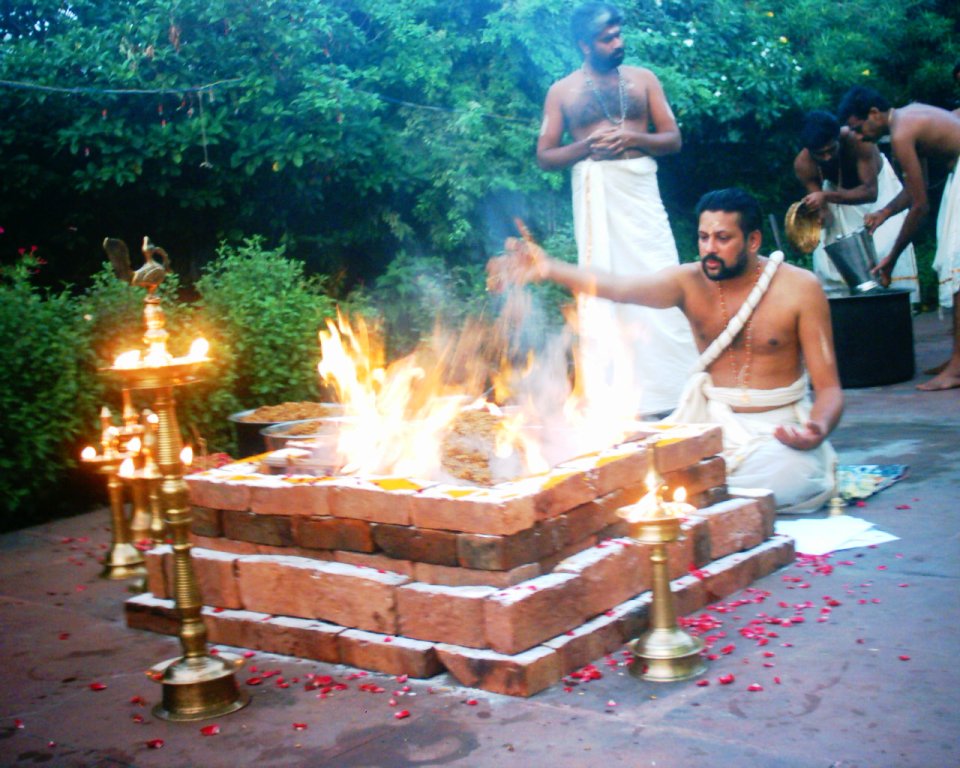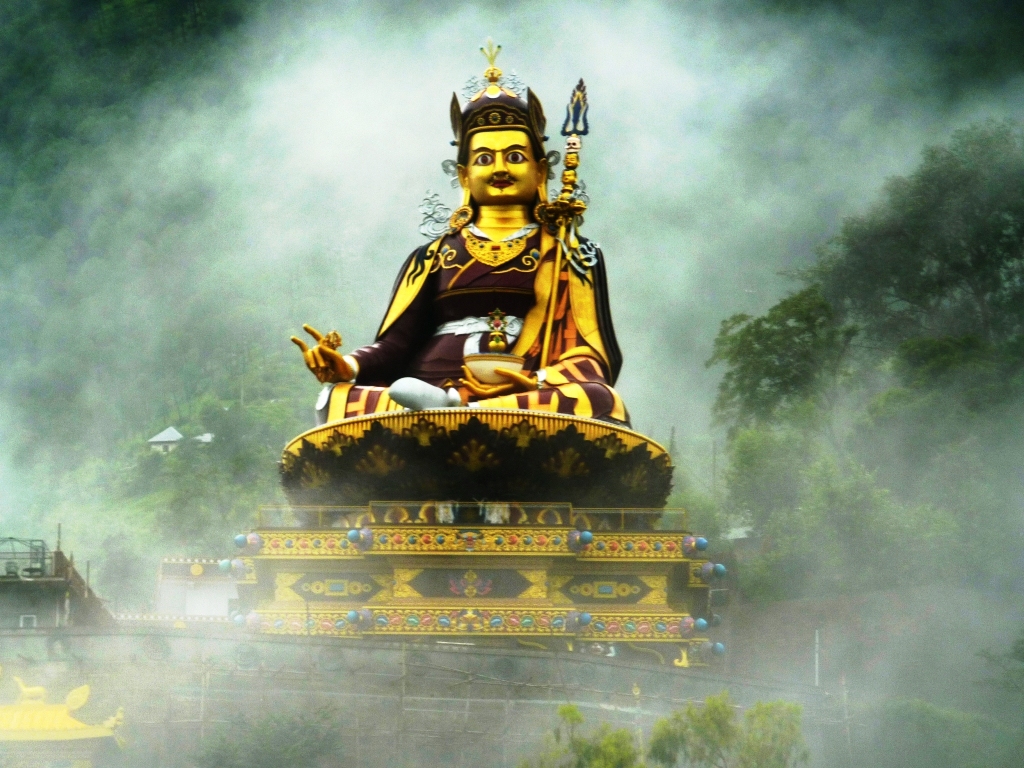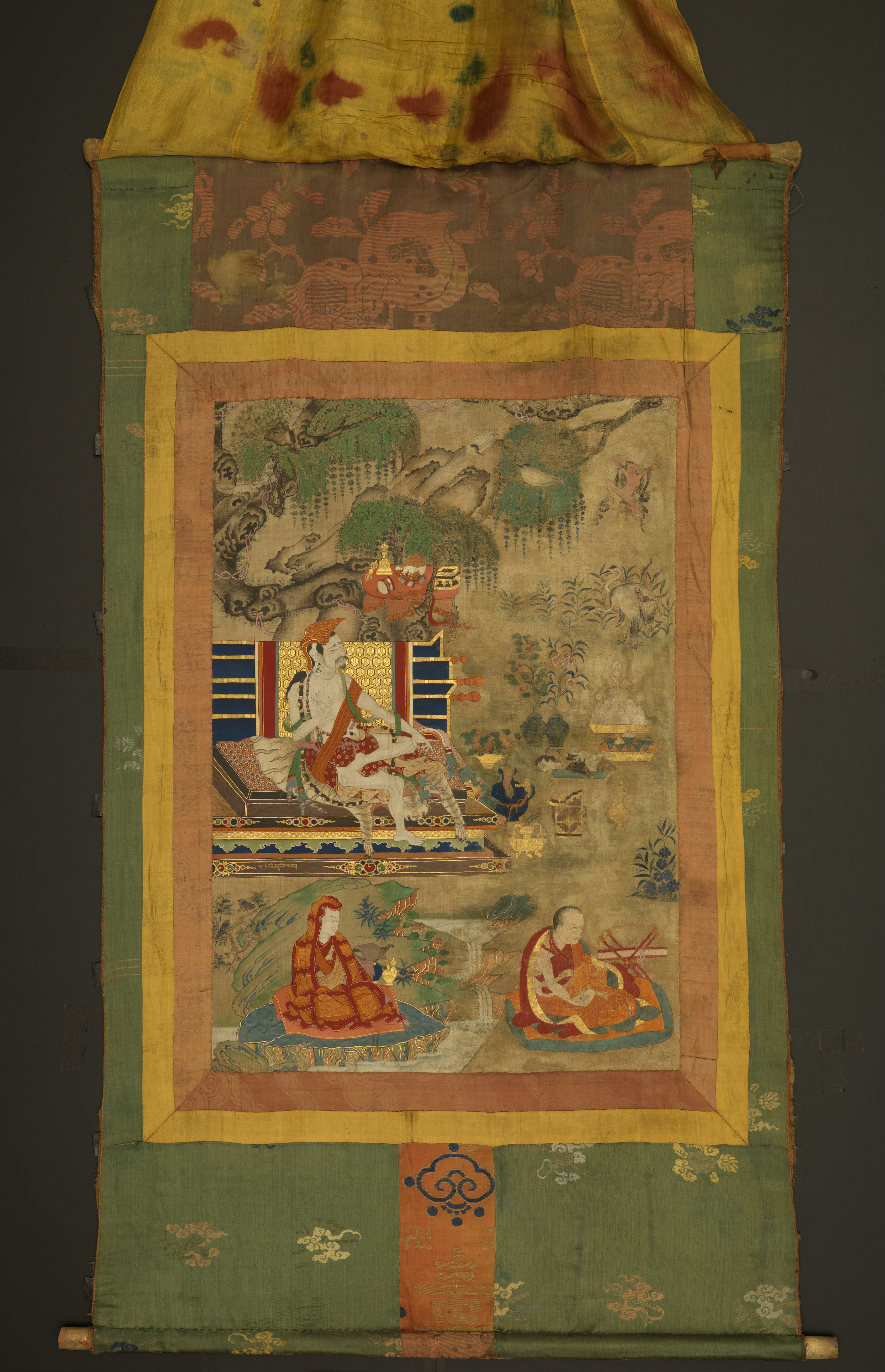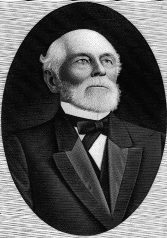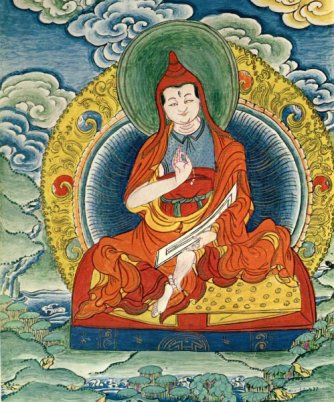|
Trul Khor
''Trul khor'' ('magical instrument' or 'magic circle;' Skt. ), in full ''tsa lung trul khor'' ( 'magical movement instrument, channels and inner breath currents'), also known as yantra yoga, is a Vajrayana discipline which includes pranayama (breath control) and body postures (asanas). From the perspective of the Indo-Tibetan Buddhist traditions of Dzogchen, the mind is merely ''vāyu'' (breath or, more literally, wind) in the body. Thus working with ''vāyu'' and the body is paramount, while meditation, on the other hand, is considered contrived and conceptual. Namkhai Norbu Rinpoche (1938-2018), a proponent of trul khor, preferred to use the equivalent Sanskrit-derived English term 'yantra yoga' when writing in English. Trul khor derives from the instructions of the Indian mahasiddhas (great sages) who founded Vajrayana (3rd to 13th centuries CE). Trul khor traditionally consists of 108 movements, including bodily movements (or dynamic asanas), incantations (or mantras) ... [...More Info...] [...Related Items...] OR: [Wikipedia] [Google] [Baidu] |
Chakras And Energy Channels 2 (3749594497)
A chakra (; ; ) is one of the various focal points used in a variety of ancient meditation practices, collectively denominated as Tantra, part of the inner traditions of Hinduism and Buddhism. The concept of the chakra arose in Hinduism. Beliefs differ between the Indian religions: Buddhist texts mention four or five chakras, while Hindu sources often have six or seven. The modern "Western chakra system" arose from multiple sources, starting in the 1880s with H. P. Blavatsky and other Theosophists, followed by Sir John Woodroffe's 1919 book ''The Serpent Power'', and Charles W. Leadbeater's 1927 book ''The Chakras''. Psychological and other attributes, rainbow colours, and a wide range of correspondences with other systems such as alchemy, astrology, gemstones, homeopathy, Kabbalah and Tarot were added later. Etymology Lexically, ''chakra'' is the Indic reflex of an ancestral Indo-European form ''*kʷékʷlos'', whence also "wheel" and "cycle" (). [...More Info...] [...Related Items...] OR: [Wikipedia] [Google] [Baidu] |
Tibetan Buddhism
Tibetan Buddhism is a form of Buddhism practiced in Tibet, Bhutan and Mongolia. It also has a sizable number of adherents in the areas surrounding the Himalayas, including the Indian regions of Ladakh, Gorkhaland Territorial Administration, Darjeeling, Sikkim, and Arunachal Pradesh, as well as in Nepal. Smaller groups of practitioners can be found in Central Asia, some regions of China such as Northeast China, Xinjiang, Inner Mongolia and some regions of Russia, such as Tuva, Buryatia, and Kalmykia. Tibetan Buddhism evolved as a form of Mahayana, Mahāyāna Buddhism stemming from the latest stages of Indian Buddhism (which included many Vajrayana, Vajrayāna elements). It thus preserves many Indian Buddhist Tantra, tantric practices of the Gupta Empire, post-Gupta Medieval India, early medieval period (500–1200 CE), along with numerous native Tibetan developments. In the pre-modern era, Tibetan Buddhism spread outside of Tibet primarily due to the influence of the Mongol Emp ... [...More Info...] [...Related Items...] OR: [Wikipedia] [Google] [Baidu] |
Dzogchen Practices
Dzogchen ( 'Great Completion' or 'Great Perfection'), also known as ''atiyoga'' ( utmost yoga), is a tradition of teachings in Indo-Tibetan Buddhism and Bön aimed at discovering and continuing in the ultimate ground of existence. The goal of Dzogchen is the direct experience of this basis, called (Sanskrit: ). There are spiritual practices taught in various Dzogchen systems for discovering . Dzogchen emerged during the first dissemination of Buddhism in Tibet, around the 7th to 9th centuries CE. While it is considered a Tibetan development by some scholars, it draws upon key ideas from Indian sources. The earliest Dzogchen texts appeared in the 9th century, attributed to Indian masters. These texts, known as the Eighteen Great Scriptures, form the "Mind Series" and are attributed to figures like Śrī Siṅgha and Vimalamitra. Early Dzogchen was marked by a departure from normative Vajrayāna practices, focusing instead on simple calming contemplations leading to a direct ... [...More Info...] [...Related Items...] OR: [Wikipedia] [Google] [Baidu] |
Yoga Journal
''Yoga Journal'' is a website and digital journal, formerly a print magazine, on yoga as exercise founded in California in 1975 with the goal of combining the essence of traditional yoga with scientific understanding. It has produced live events and materials such as DVDs on yoga and related subjects. The magazine grew from the California Yoga Teachers Association's newsletter, which was called ''The Word''. ''Yoga Journal'' has repeatedly won Western Publications Association's Maggie Awards for "Best Health and Fitness Magazine". It has however been criticized for representing yoga as being intended for affluent white women; in 2019 it attempted to remedy this by choosing a wider variety of yoga models. The magazine was acquired by Outside in 2020. Beginnings ''Yoga Journal'' was started in May 1975 by the California Yoga Teachers Association (CYTA), with Rama Jyoti Vernon as President, William Staniger as the founding editor, and Judith Lasater on the board and serving as ... [...More Info...] [...Related Items...] OR: [Wikipedia] [Google] [Baidu] |
Padmasambhava
Padmasambhava ('Born from a Lotus'), also known as Guru Rinpoche ('Precious Guru'), was a legendary tantric Buddhist Vajracharya, Vajra master from Oddiyana. who fully revealed the Vajrayana in Tibet, circa 8th – 9th centuries... He is considered an emanation or Nirmāṇakāya of Gautama Buddha, Shakyamuni Buddha as foretold by the Buddha himself. According to early Tibetan sources including the ''Testament of Ba'', he came to Tibet in the 8th century and designed Samye Monastery, the first Buddhist monastery in Tibet during the reign of King Trisong Detsen. He, the king, and Khenpo Shantarakshita are also responsible for creating the Tibetan canon, Tibetan Canon through translating all of the Buddha's teachings and their commentaries into the Tibetan language. According to Lewis Doney, while his historical authenticity was questioned by earlier Tibetology, Tibetologists, it is now "cautiously accepted.” Padmasambhava himself was recorded as saying he was an historical per ... [...More Info...] [...Related Items...] OR: [Wikipedia] [Google] [Baidu] |
Six Yogas Of Naropa
The Six Dharmas of Nāropa (, Skt. ''ṣaḍdharma'', "Naro's six doctrines" or "six teachings") are a set of advanced Tibetan Buddhist tantric practices compiled by the Indian mahasiddhas Tilopa and Nāropa (1016–1100 CE) and passed on to the Tibetan translator-yogi Marpa Lotsawa (). Another name for the six Dharmas is "the oral instruction transmission for achieving liberation in the bardo," or "the ''Bardo Trang-dol'' system". Bardo here, refers to the three bardos of waking, sleep and dying. They are also referred to as "the path of means" (''thabs lam'') in Kagyu literature.Kragh (2015), p. 345. They are also sometimes called the ''Six Yogas of Nāropa'' (though not in the traditional literature which never uses the term ''ṣaḍaṅga-yoga'' or ''sbyor-drug''). The six dharmas are a collection of tantric Buddhist completion stage practices drawn from the Buddhist tantras. They are intended to lead to Buddhahood in an accelerated manner. They traditionally require ... [...More Info...] [...Related Items...] OR: [Wikipedia] [Google] [Baidu] |
Desi Sangye Gyatso
Kalon Sangye Gyatso (1653–1705) was the sixth regent of the 5th Dalai Lama (1617–1682), in the Ganden Phodrang government. He founded the Chagpori College of Medicine in 1694, a Traditional Tibetan medicine school for monks which grew in 1916 under the 13th Dalai Lama to include Astrology and Astronomy departments collectively called the Men-Tsee-Khang. He wrote the ''Blue Beryl'' (Blue Sapphire) medical treatise, and illustrated medical thankas. His name is sometimes written as ''Sangye Gyamtso'' and ''Sans-rGyas rGya-mTsho'' In some accounts, Sangye Gyatso is believed to be the son of the "Great Fifth", but he was born near Lhasa in September 1653, when the Dalai Lama had been absent on his trip to China for the preceding sixteen months. Richardson, Hugh E. (1998) ''High Peaks, Pure Earth; Collected Writings on Tibetan History and Culture''. Serindia Publications, London. p. 455 He ruled as the Kalon (regent) of the Dalai Lama and under his instructions hid the death of t ... [...More Info...] [...Related Items...] OR: [Wikipedia] [Google] [Baidu] |
Tenzin Wangyal Rinpoche
Tenzin Wangyal Rinpoche ( Tib. o thog bstan 'dzin dbang rgyal) is a teacher (lama) of the Bon Tibetan religious tradition. He is founder and director of the Ligmincha Institute and several centers named Chamma Ling, organizations dedicated to the study and practice of the teachings of the Bon tradition. Life Tenzin Wangyal's parents fled the Chinese invasion of Tibet and later, in 1961, he was born in Amritsar, India. At the age of eleven, he began dzogchen training from both Buddhist and Bon teachers. He began an eleven-year traditional course of instruction at Bonpo Monastic Center and in 1986 attained the degree of ''Geshe'', the highest academic degree of traditional Tibetan culture. That same year, Tenzin Wangyal began employment at the Library of Tibetan Works and Archives in Dharamsala, India. In 1988 he began to teach in Italy at the invitation of Chögyal Namkhai Norbu. In 1991, he was awarded a Rockefeller Fellowship at Rice University in Houston, Texas. A second ... [...More Info...] [...Related Items...] OR: [Wikipedia] [Google] [Baidu] |
Shardza Tashi Gyaltsen
Shardza Tashi Gyaltsen () (1859–1933 or 1935) was a great Dzogchen master of the Bon tradition of Tibet who took not only Bon disciples, but gathered students from all traditions of Tibetan Buddhism. Biography Shardza was born in 1859 in Kham.Gayley, Holly; Schapiro, Joshua (2017). ''A Gathering of Brilliant Moons Practice Advice from the Rime Masters of Tibet''. Wisdom Publications. pp. 97-99. He took ordination at age 30. He wrote philosophical works and became an influential Bon scholar. Shardza has been cited as a vegetarian as he refused to eat the meat of any animal that was slaughtered. However, Shardza would eat meat from animals that died naturally from accidents or attacked by wolves as the consumer has no involvement in the death of the animal. According to tradition, Shardza Tashi Gyeltsen famously realized the rainbow body. Chaoul (2006) opened the discourse of Bon traditions of Trul khor into Western scholarship in English with his thesis from Rice University, ... [...More Info...] [...Related Items...] OR: [Wikipedia] [Google] [Baidu] |
Rice University
William Marsh Rice University, commonly referred to as Rice University, is a Private university, private research university in Houston, Houston, Texas, United States. Established in 1912, the university spans 300 acres. Rice University comprises eight undergraduate, graduate and professional schools, including Rice University School of Humanities, School of Humanities, Rice University School of Social Sciences, School of Social Sciences, Jesse H. Jones Graduate School of Business, George R. Brown School of Engineering, Wiess School of Natural Sciences, Susanne M. Glasscock School of Continuing Studies, Rice University School of Architecture, Rice School of Architecture, and Shepherd School of Music. Established as William M. Rice Institute for the Advancement of Literature, Science and Art after the murder of its namesake William Marsh Rice, Rice has been a member of the Association of American Universities since 1985 and is Carnegie Classification of Institutions of Higher ... [...More Info...] [...Related Items...] OR: [Wikipedia] [Google] [Baidu] |
Vairotsana
Vairotsana () was a lotsawa or "translator" living during the reign of King Trisong Detsen, who ruled 755-97 CE. Vairotsana, one of the 25 main disciples of Padmasambhava, was recognized by the latter as a reincarnation of an Indian pandita. He was among the first seven monks ordained by Śāntarakṣita, and was sent to Dhahena in India to study with Śrī Siṅgha, who taught him in complete secrecy. Śrī Siṅgha in turn entrusted Vairotsana with the task of propagating the semde and longdé sections of Dzogchen in Tibet. He is one of the three main masters to bring the Dzogchen teachings to Tibet, the two others being Padmasambhava and Vimalamitra, and was also a significant lineage holder of trul khor. Shechen Gyaltsab mentions in his ''Pond of White Lotus Flowers'' that before meeting Śrī Siṅgha, Vairotsana had met the wisdom forms of the two vidyadharas Garab Dorje and Mañjuśrīmitra in a miraculous pagoda at Dhahena. After he had presented a huge off ... [...More Info...] [...Related Items...] OR: [Wikipedia] [Google] [Baidu] |
